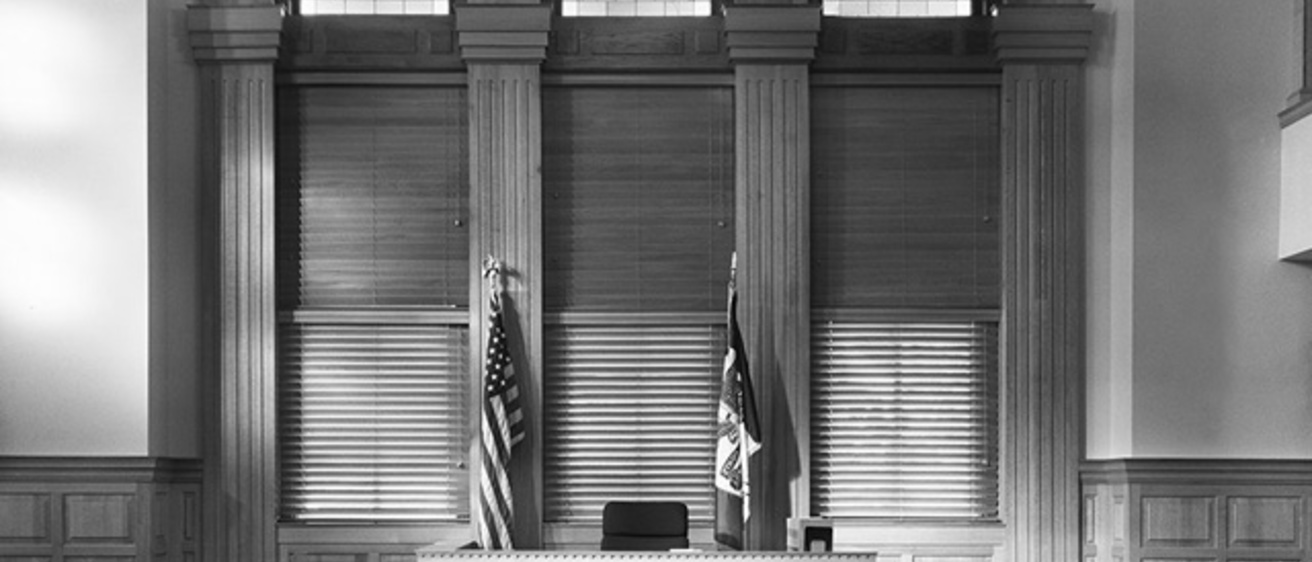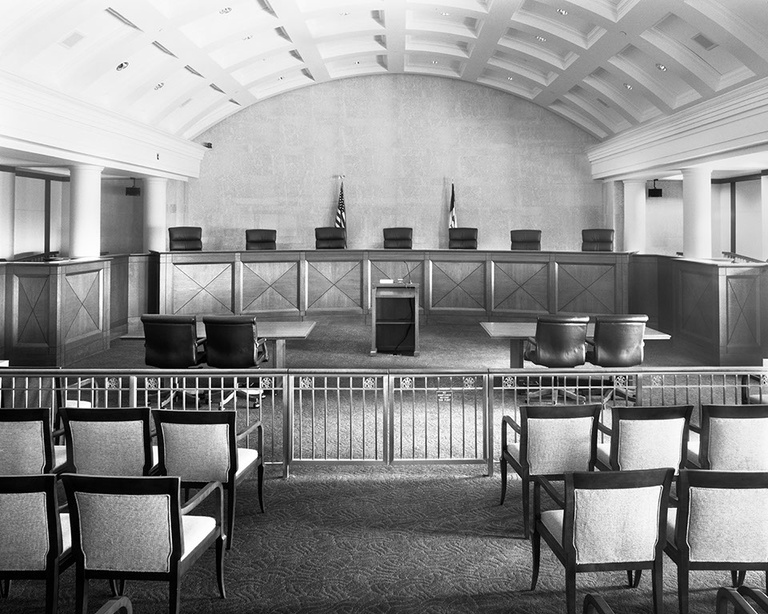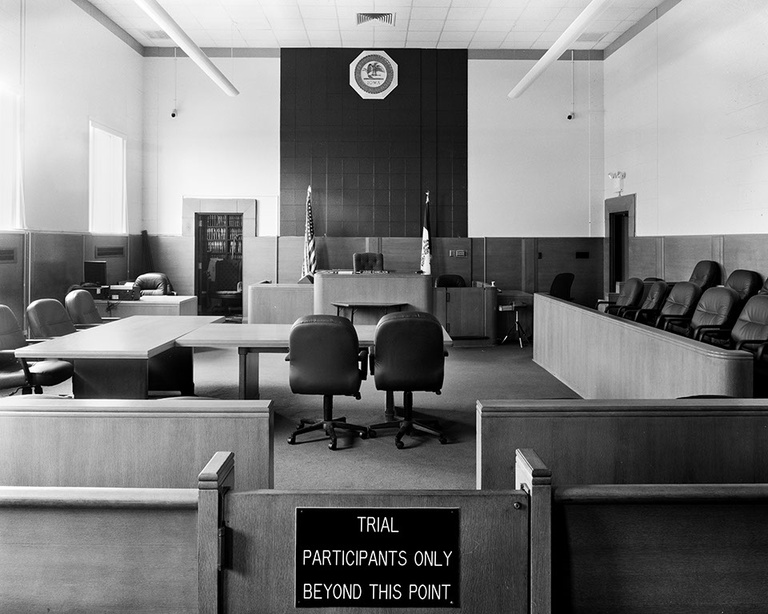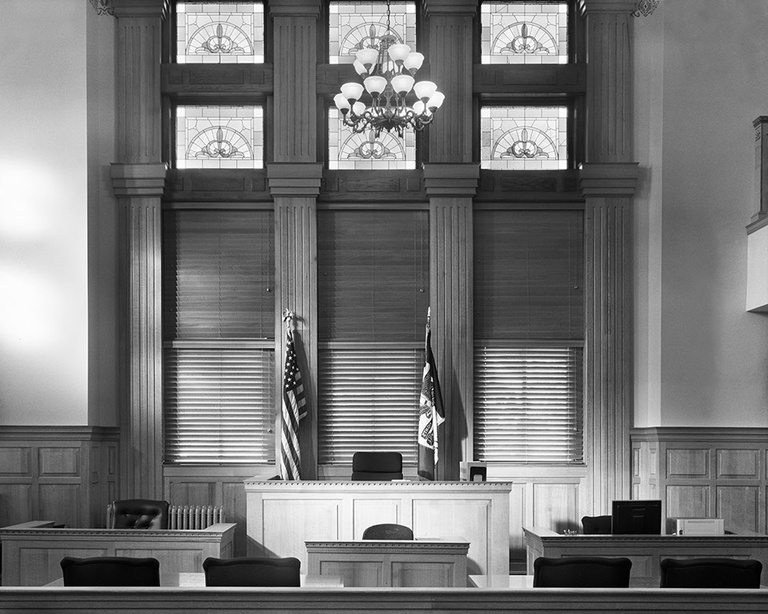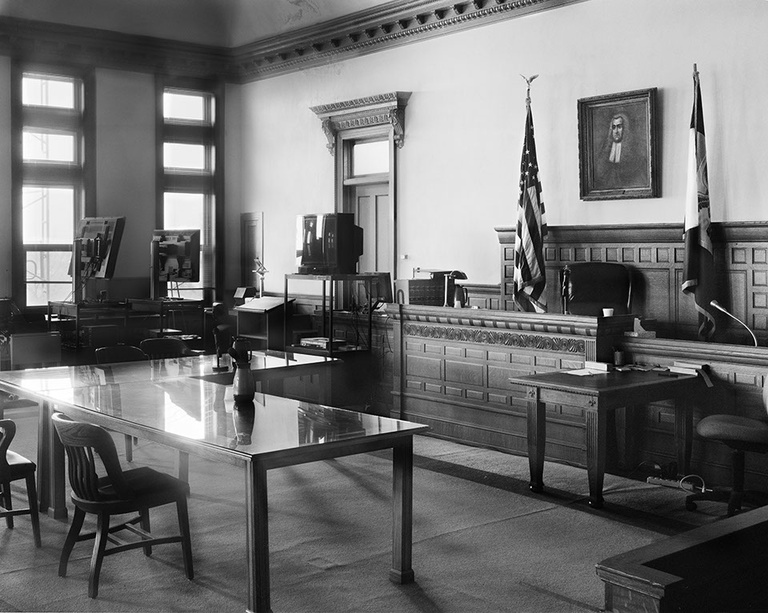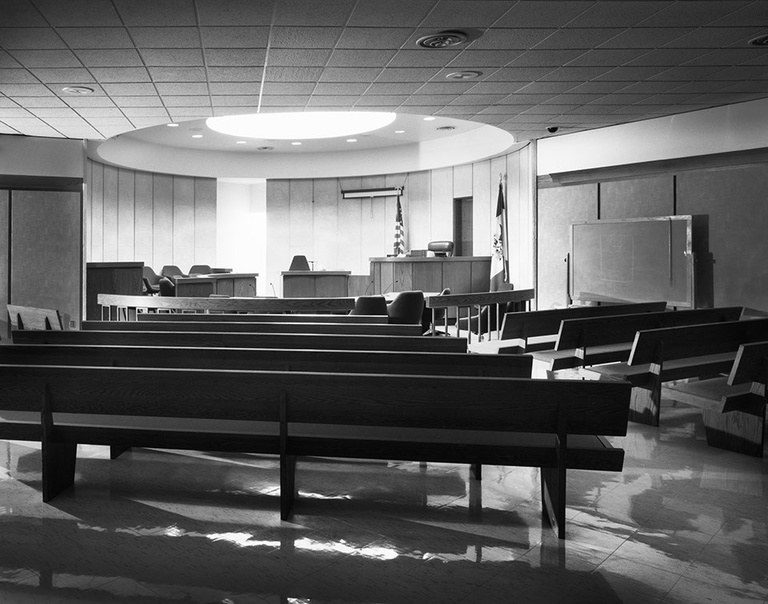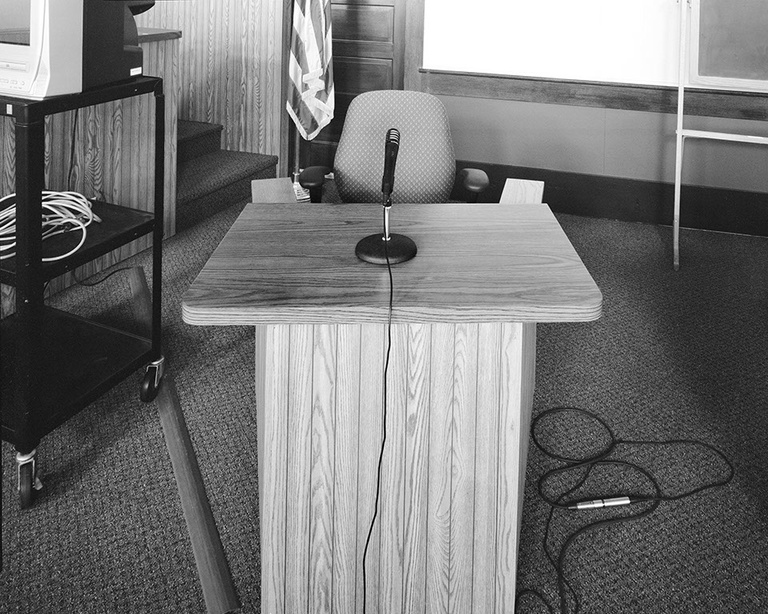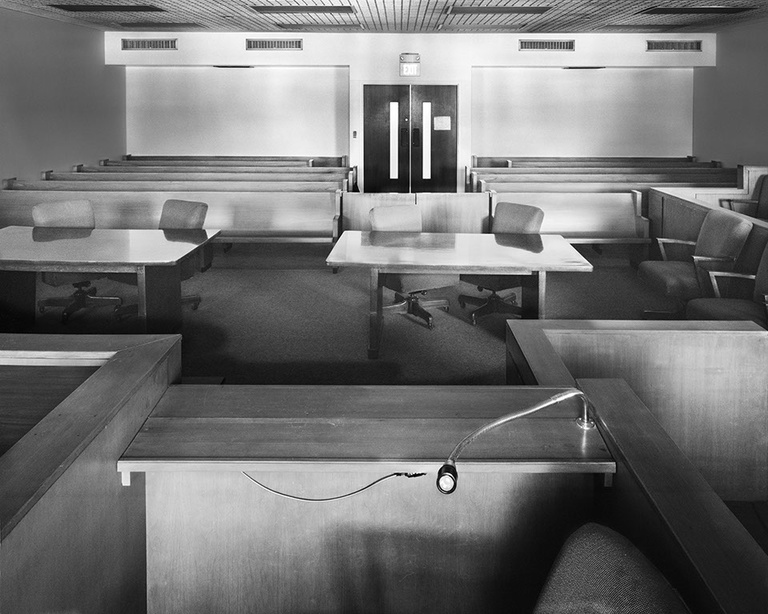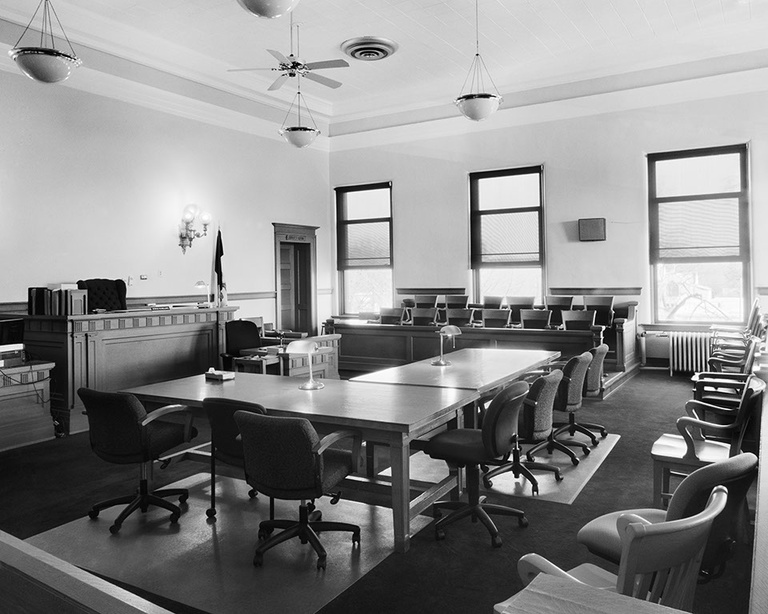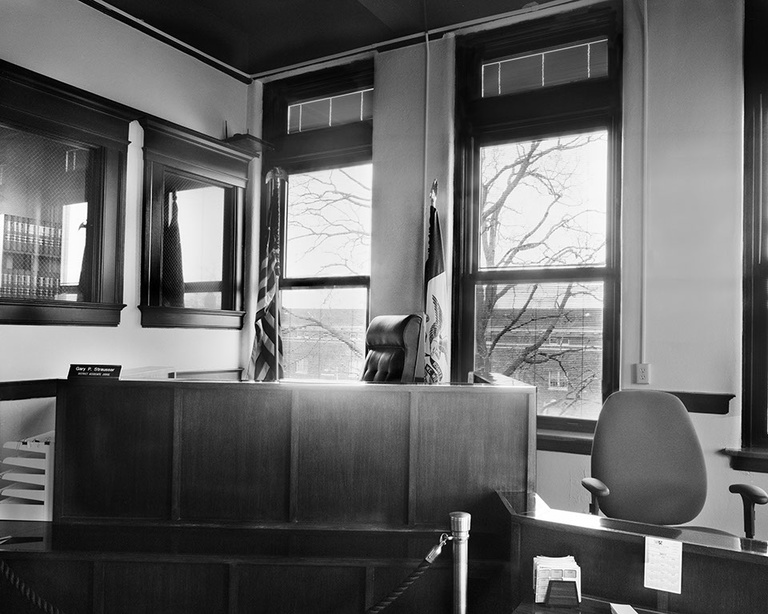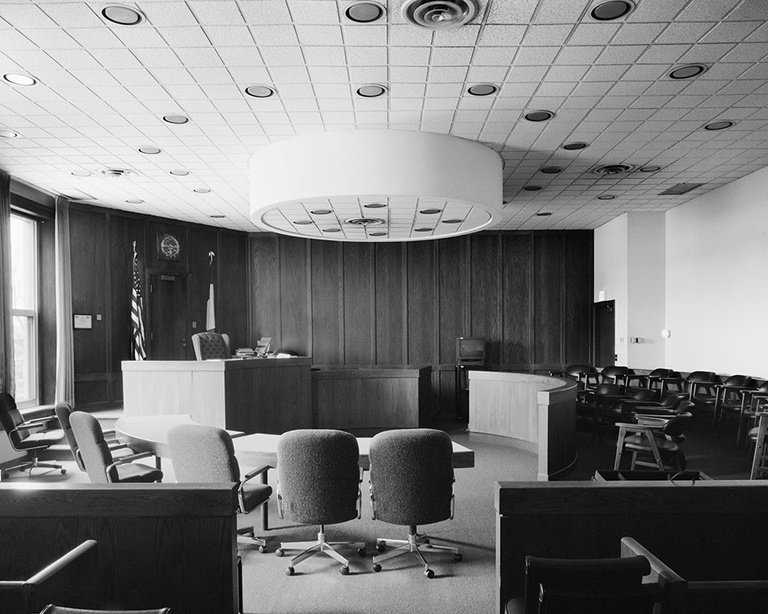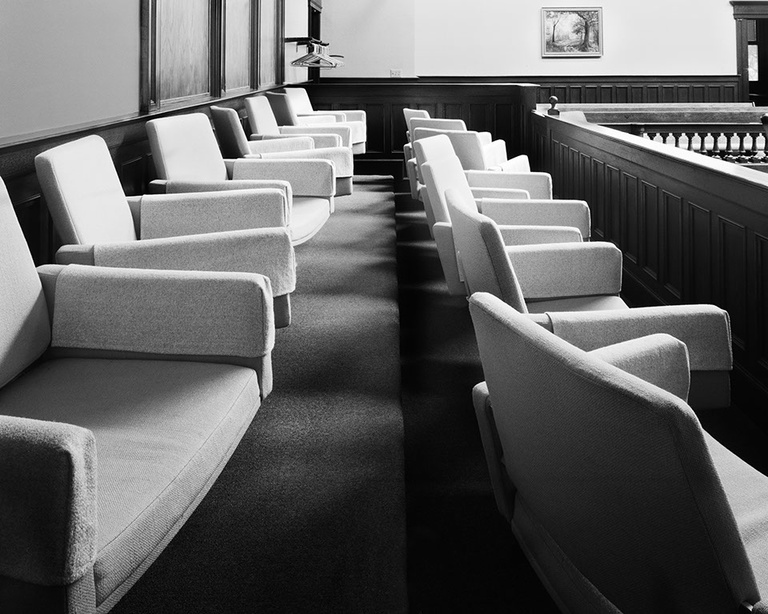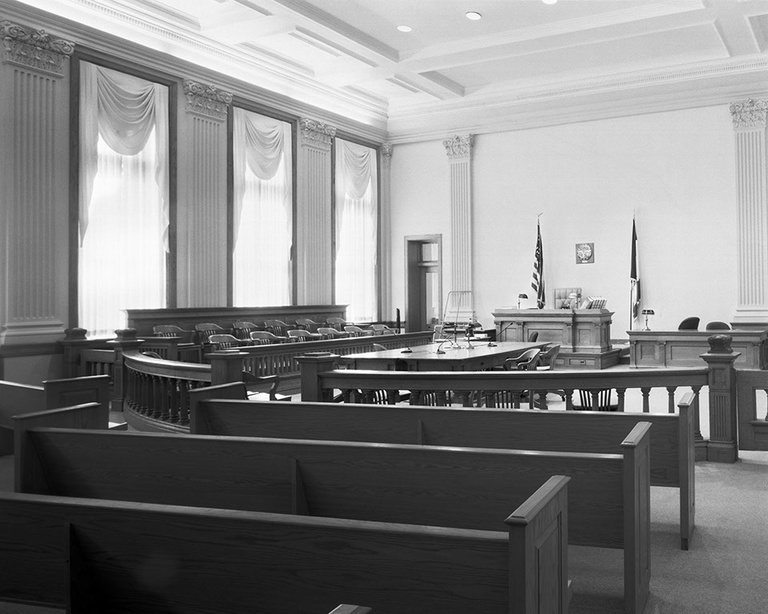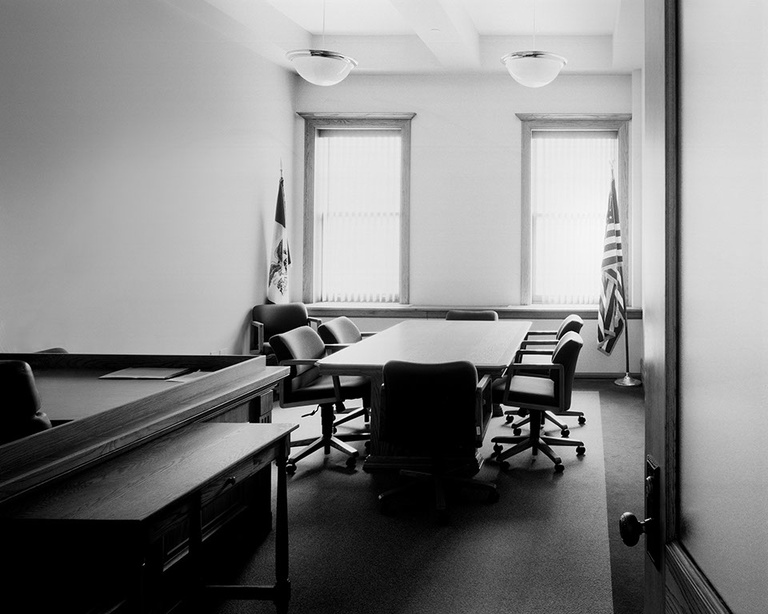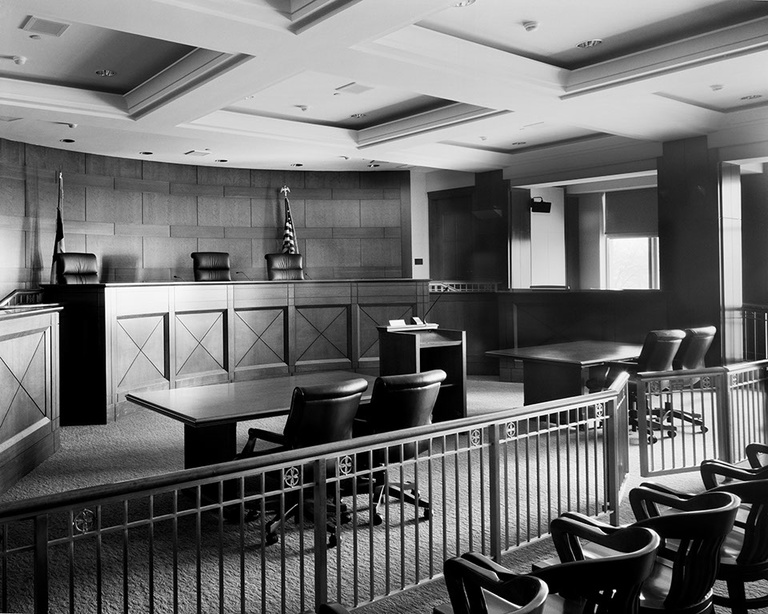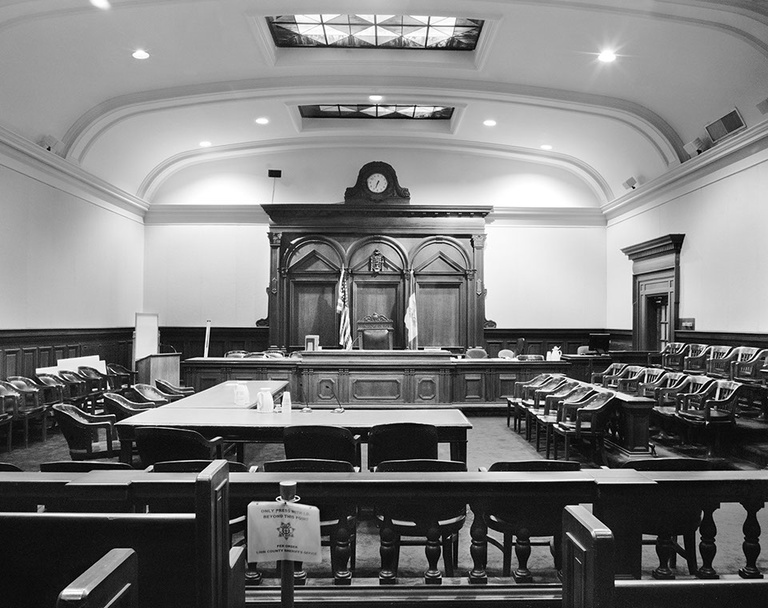When your father is a lawyer, and your grandfather is a lawyer, and your great-grandfather is a lawyer, it seems natural that you’re going to be drawn to courtrooms.
That holds true even if you’re a photographer. So it’s no real surprise that when University of Iowa student Christopher Beckman was thinking about his senior thesis project for his photography major, he turned to chambers of justice for a subject.

“Courtrooms have always struck me as a space that’s naturally interesting,” says Beckman. “You think about all the things that happen there, how many lives have changed because of what goes on in a courtroom. Even after hours, when I shot my photos, you can still see the remnants of what happened that day, the judge’s chair pointed in the direction he left the bench, the way the lawyer’s chairs point.”
Beckman’s documentary photos were published in the Iowa Review. The black-and-white images were taken after the court’s business was done for the day with a large-format 4x5 camera and exposure times of between five minutes and a half hour. He used film and made the initial prints in a darkroom. All but two of the photos were lit with natural light from the windows. The wide-angle format lets us see the entire room at once, unlike the courtroom images we see on TV or in newspapers, which show only bits and pieces of the space.
Beckman says he’s always been interested in spaces—he’d shot earlier photography class projects of fine dining establishments in Iowa City and architectural models of buildings, which are containers of spaces, after all. With this project, he takes courtrooms—about as utilitarian a room as you can get—and finds their mystery and awe, with shadows figuring prominently in unadorned spaces dedicated to the light of truth. He says the older courtrooms, the ones that look like 1977, made for the best photos.
“When you think about it, you don’t often see courtrooms as a study for art,” says Beckman, a Burlington native who graduated in May 2011 with majors in journalism and photography. “But there’s a sense of reality to them. People met in this room and it’s a part of the justice system and you can see that in the photos, that there’s life in these places.”
All told, photos of 25 courtrooms are included in the project, and while there’s still 76 more waiting around Iowa to photograph, he says this project is complete.
“I like where it is now. I worry that if I add any more it will look like a catalog.”
